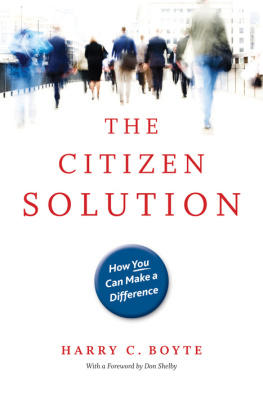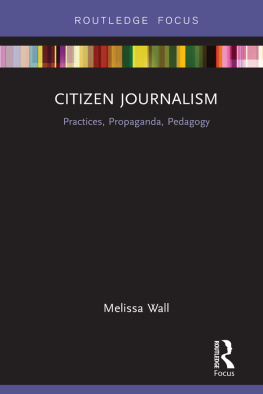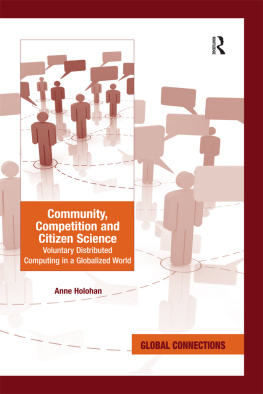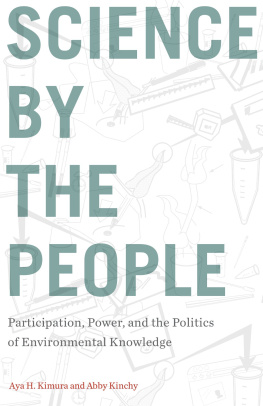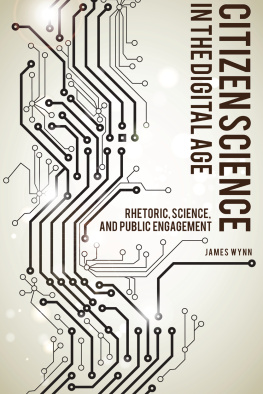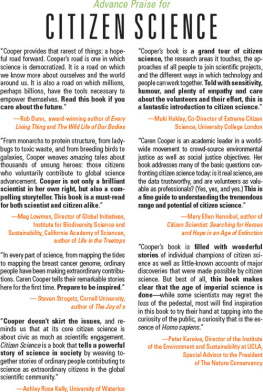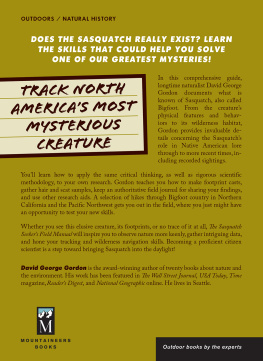Contents
Guide
Page List
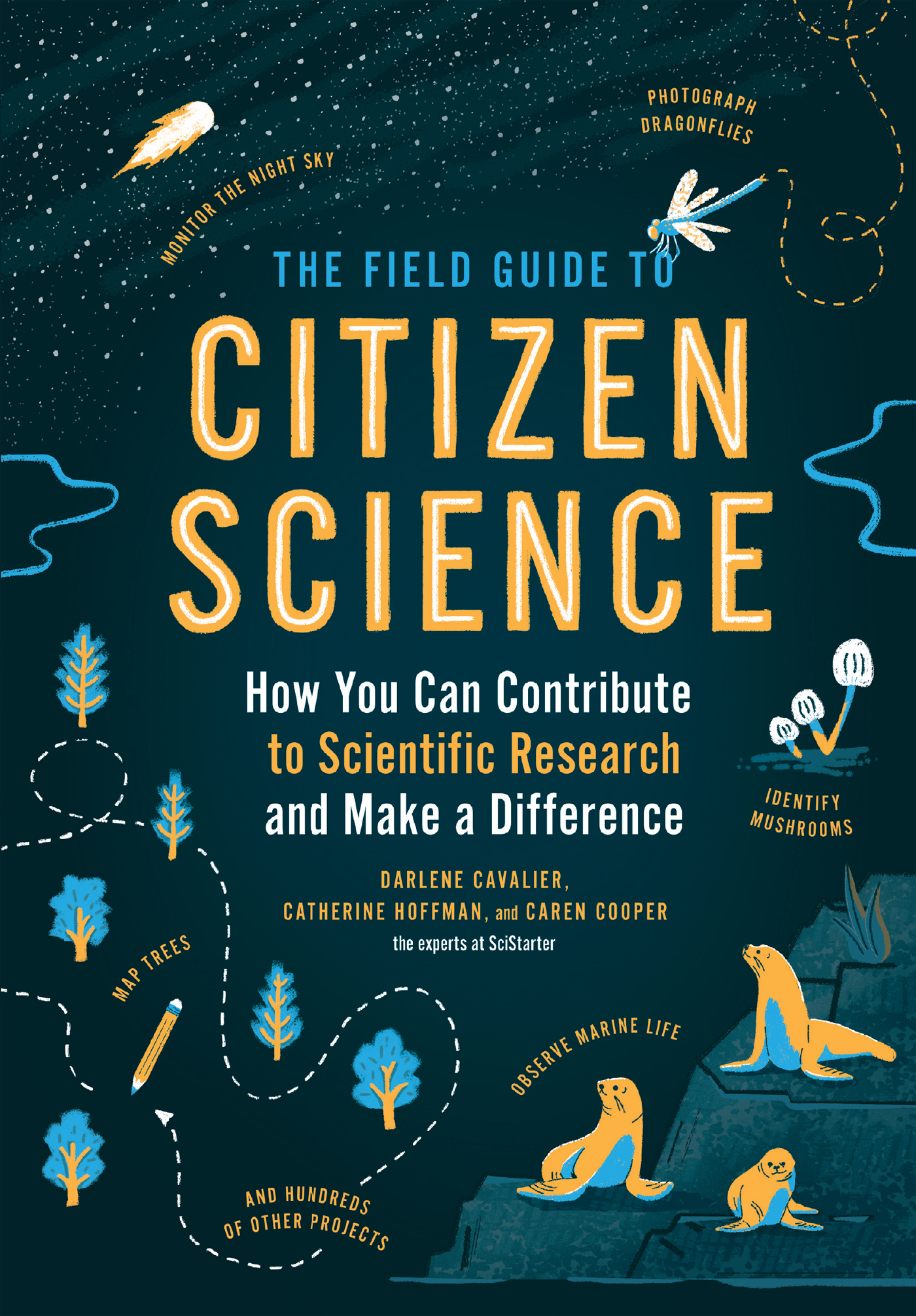
The Field Guide To
Citizen Science
How You Can Contribute to Scientific Research and Make a Difference
From the experts at SciStarter
Darlene Cavalier, Catherine Hoffman, And Caren Cooper

Science is a wonderful thing if one does not have to earn a living at it.
Albert Einstein
Contents
Introduction

Many times in our lives we may be filled with an urge to explore and discover. We may be curious about everyday encounters with birdsongs or spiders in webs. Or we may become concerned about air quality or the safety of our drinking water. As we face global challenges, we may want to find local ways to make a difference in protecting end-angered species, safeguarding marine systems, preventing disease, or accelerating medical research. Sometimes finding solutions through new discoveries requires a lot more eyes, ears, and perspectives than scientists possess. Put simply, citizen science is a collaboration between scientists and those of us who are curious or concerned and motivated to make a difference. Citizen science can satisfy that urge, bring joy and purpose to our lives, and advance a surprising diversity of scientific research.
This book will help you discover opportunities to be an explorer, to participate in this movement sweeping the globe. Yes, the globe. If you are surprised to hear about the burgeoning popularity of citizen science, you are not alone. Conventional science frequently takes place out of sight, with methods and outcomes that remain a mystery to most. Compare that to sports, art, or music, in which we watch professionals perform in public view and then take part as amateurs in our local sports leagues, art gallery, or garage band. Theres no expectation that our participation will or should lead to professional careers in pursuits we enjoy. By putting science in public view, citizen science makes it possible for anyone to participate, with or without a formal scientific background.
Citizen science brings science within reach by connecting two critical ingredients: you and teams of scientists who need and value your help for authentic research. Typically, scientists provide the instructions, protocols, and procedures, as well as the equipment and structures to guide you in sharing your observations: what you see, hear, smell, track, count, and tally. In return, you provide scientists knowledge through your observations and insights or analysisdata that scientists cannot access, collect, and analyze alone. Increasingly, citizen scientists are also setting the research agenda by identifying issues they are curious or concerned about and then tapping scientists to assist with the development of protocols, interpretation of data, and translation of data into action.
Todays opportunities to participate in citizen science are boundless. Odds are there is a citizen science project that coincides with any hobby, interest, curiosity, or concern that you may have. Matching people and projects appropriately is essential to success. Along with the fifty-plus projects featured in this book, well show you how to discover thousands of opportunities and the citizen science projects most suited to you by working with the SciStarter website. You can use it to discover, join, and even track your contributions to projects. With SciStarter as your online assistant, we encourage you to treat this book as your field guide and the beginning of an exploration into citizen science.
Some participants collect data by taking photos of clouds or streams, documenting changes in nature, or counting litter on their local beach. Other citizen scientists use low-cost sensors to help scientists keep an eye on local air, water, and social conditions. Countless others collect and send in microbes, track flu symptoms, or play games to help advance health and medical research. People just like you are counting bird, butterfly, and other pollinator populations, helping nasa track landslides, and monitoring noise and light pollution in our communities.
In short, by working together we better understand our world and make better decisions.
We sincerely hope that once you start participating in the projects featured in this book, youll share your experiences with your friends and family and perhaps even inspire them to become citizen scientists. Witnessing the transformation in people who realize they are capable and needed gives us a sense of joy and accomplishment and inspires us to work harder to reach more people. Youll see what we mean!
THE history and future of Citizen Science

Not so long ago the idea that ordinary people possessed skills, knowledge, insights, and access to data that scientists needed raised more than a few eyebrows among the scientific elite. Frankly, even the public needed convincing that they had something valuable to contribute to the world through science. But today, citizen science is a robust, recognized, and respected field.
Along with sponsoring citizen science projects, government agencies and private and public foundations fund the work of researchers to help scientists, practitioners (project creators and researchers), facilitators, and policymakers understand best practices, learn how to design projects to improve data quality or increase participation levels and persistence, and share knowledge about the projects, people, and perspectives shaping this movement. The Crowdsourcing and Citizen Science Act with the goal to encourage and increase the use of crowdsourcing and citizen science methods with the Federal Governmentwas passed as part of the American Innovation and Competitiveness Act in early 2017. Citizen science outcomes are regularly included in peer-reviewed journals, and in 2018, the prestigious National Academy of Sciences published a report titled Designing Citizen Science to Support Science Learning. These and other developments signal a tectonic shift is on the horizon.
Much like the United States, Europe is witnessing unprecedented growth in citizen science. One way to understand the current landscape of citizen science here and abroad is to monitor the growth in the number of projects, amount of funds available to support projects and related research, and the emergence of institutional support networks that can help the field expand and evolve. The European Unions Horizon 2020 initiative is largely responsible for the growth in the EU due to its substantial funding. For example, Horizon 2020 funds Doing It Together Science ( ditos ), which features hundreds of citizen science events and projects embedded in art galleries, universities, science museums, and more.
Because scientific achievements have brought us to a pinnacle of health and innovation, it might seem like all research frontiers have been explored. But there will always be more unknown than known, more rocks waiting to be overturned. And discoveries are not reserved for remote reaches of the planetthey can happen close to home. In 2012, when first-year students at Columbia University were given an assignment to observe and identify ants in Manhattan, they found over a dozen species on Broadway alone. They even discovered an ant species that scientists did not know lived in New York City. Whats more, that species turned out to be the most common species in the Big Apple. The reason no one had noticed? No one had ever thought to look.


